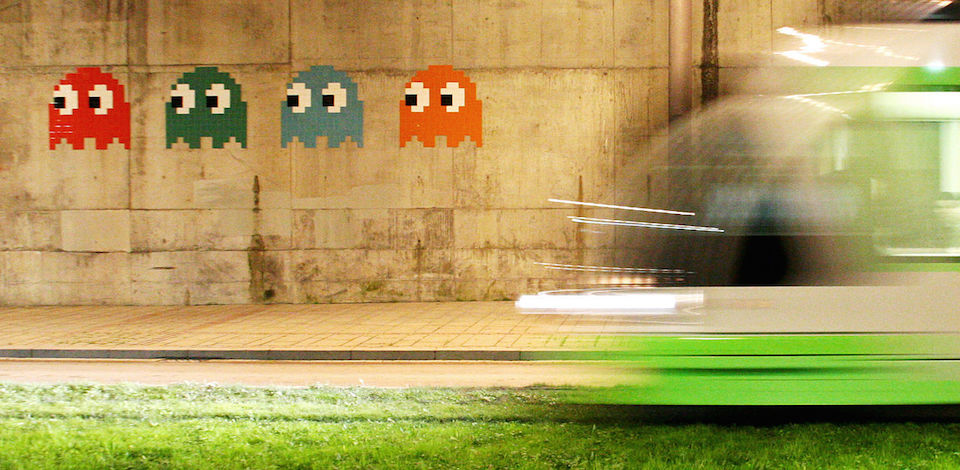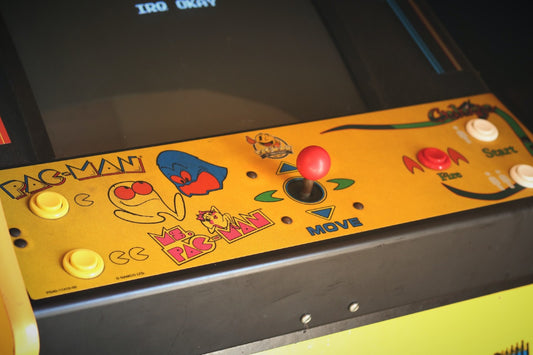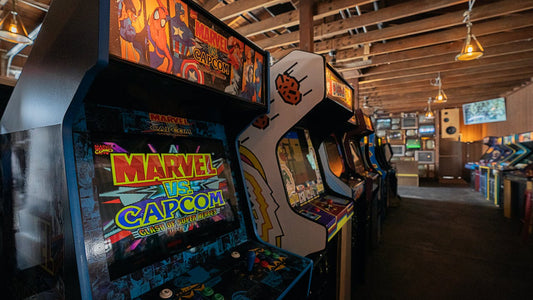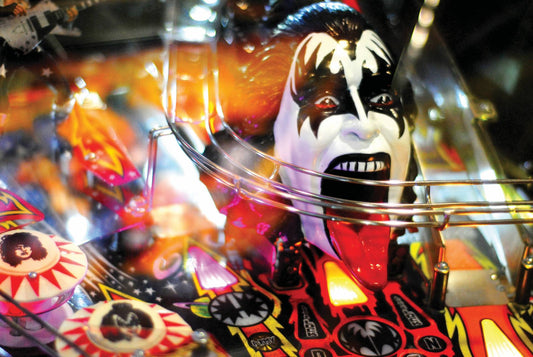Pac-Man: An Arcade Machine HIstory

The Pac-Man game series was one of the most successful of the early 1980s, spawning not only several arcade sequels but also a home version, merchandise, and even a pop song, “Pac-Man Fever,” that was a Top 10 hit in the US. Below is a list of all the most significant Pac-Man arcade releases, plus some forgotten niche side-games.
Pac-Man (1980)
Named “Pakkuman” after the Japanese onomatopoeia “paku paku,” which is the sound a mouth makes when it opens and closes, Pac-Man was originally to be named “Puck Man” in English speaking territories to reference the puck shape of its hero. However, a last-minute change to avoid the possibility of teenage vandals changing the “P” to an “F” resulted in the game we now know. This original title introduced all the main elements of the game: power pellets, ghosts, mazes, and score items. Pac-Man is still a very important title for retro game score championships.
Ms. Pac-Man (1981)
The most successful Pac-Man game in arcades, Ms. Pac-Man started as a conversion kit made by some American independent game engineers. A lawsuit required the conversion kit makers to strike a deal with Midway, the US distributor of Pac-Man. The result was a faster game that made several other improvements to the base Pac-Man gameplay and was eventually adopted as an “official” Pac-Man title by parent company Namco. Ms. Pac-Man is considered by most to be the best and most pure Pac-Man experience and is the Pac-Man game with the widest distribution of arcade machines.
Super Pac-Man (1982)
This Japan-made sequel was meant to be the follow-up to the original Pac-Man and adjusted gameplay by putting in numerous “gates” that required the player to eat keys to open. Additionally, there’s a second type of super pellet that makes Pac-Man invulnerable to ghosts and able to eat doors, though he cannot eat the ghosts without the original power-up. Super Pac-Man was a radical departure from the eat-and-run mechanics of Pac-Man and Ms. Pac-Man and was the least successful of the early run of Pac-Man games, though many retro game enthusiasts praise this version for its AI.
Pac-Man Plus (1982)
Pac-Man Plus was another US-produced conversion kit release for the original Pac-Man, meant to modify the now two-year-old Pac-Man machines to make them more exciting for players and hopefully increase revenue. The changes were nearly all cosmetic, including changing the appearance of the maze and the look of some of the point items (including a can of Coca-Cola).
Baby Pac-Man (1982)
Another Midway-designed Pac-Man spinoff, Baby Pac-Man was half video game, half pinball machine. Along with Pac-Man Plus and the later Professor Pac-Man, these constant non-official spin-offs eventually caused Namco to sever its business relationship with Midway. Only 10,000 units of Baby Pac-Man were produced and it is a rare machine to find nowadays.
Professor Pac-Man (1983)
The last Midway Pac-Man title, this game does not include any traditional Pac-Man gameplay. Instead, it is a quiz game starring the Pac-Man character. Another rare machine to find.
Pac & Pal, Pac-Man & Chomp-Chomp (1983)
Two side-sequels to Pac-Man were made in Japan in 1983, each featuring a second playable character, though gameplay was not affected. Pac & Pal features Miru, a green ghost, while Pac-Man & Chomp-Chomp features Pac-Man’s dog Chomp-Chomp from the Pac-Man cartoon.
Jr. Pac-Man (1983)
The second “true” sequel after Super Pac-Man, Jr. Pac-Man was the first Pac-Man game to feature mazes larger than the visible area of the screen. Instead of having warp tunnels on the sides of the mazes, the mazes of Jr. Pac-Man are double the size of the visible screen and are completely enclosed. Additionally, the moving score items change the nature of the regular dots. Once the score items touch the dots, the value of the dot is multiplied by five, but eating them slows down the player.
Pac-Land (1984)
A huge departure for the series, Pac-Land was a side-scrolling platformer instead of a maze game. An interesting design choice for some cabinets was that instead of a joystick for movement, there was a “left” and “right” button on the cabinet in addition to “jump.”
Pac-Mania (1987)
Visually a huge step forward for Pac-Man, Pac-Mania featured isometric 3-D mazes that were more than four times the size of the visible screen. Pac-Man always maintained a position in the center of the screen as the virtual camera moved around with him. Additionally, in Pac-Mania Pac-Man could jump over ghosts to avoid them with the press of a button. Additionally, some of the ghosts will jump to attempt to meet Pac-Man in the air.
Pac-Man Battle Royale (2011)
Developed for Pac-Man’s 30th anniversary, Pac-Man Battle Royale features up to four players playing simultaneously as different-colored Pac-Men competing for points. Additionally, Pac-Man can eat the other players when he grabs a power pellet. This game is popular in the few arcades that remain, especially “barcades” that serve food and alcohol in addition to having games.
Cover Photo by kurtxio / CC-BY



